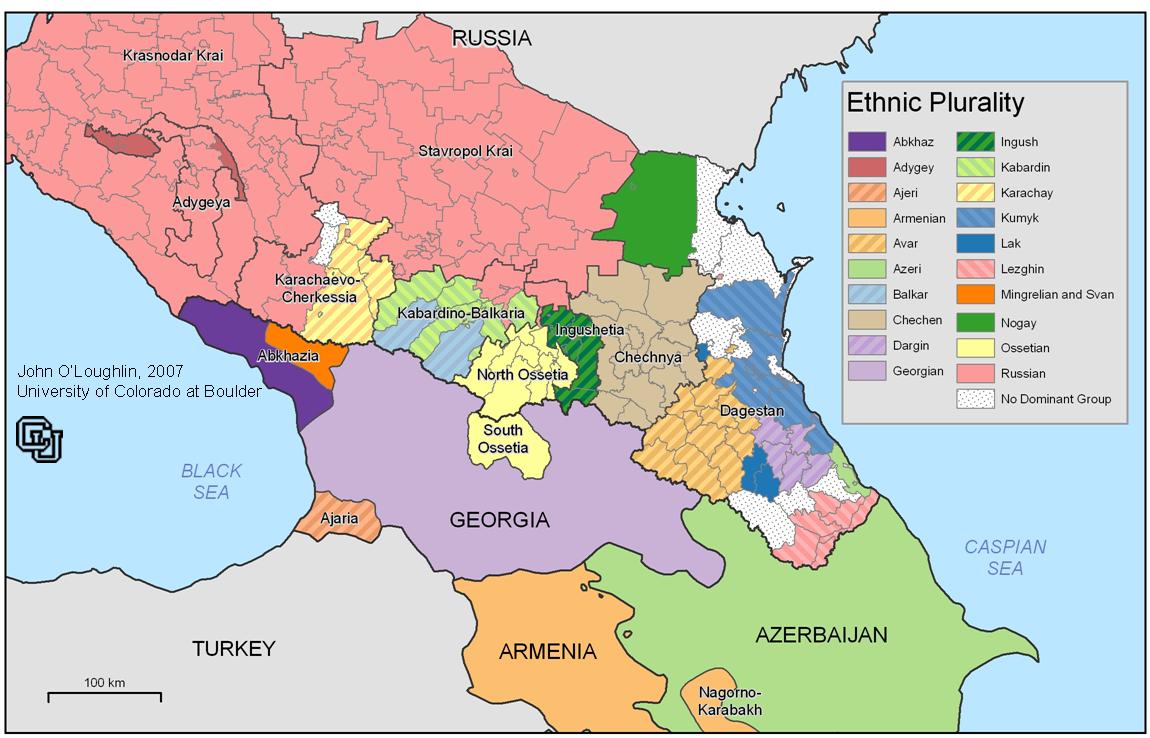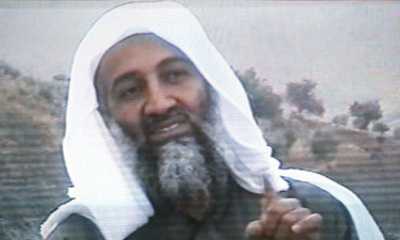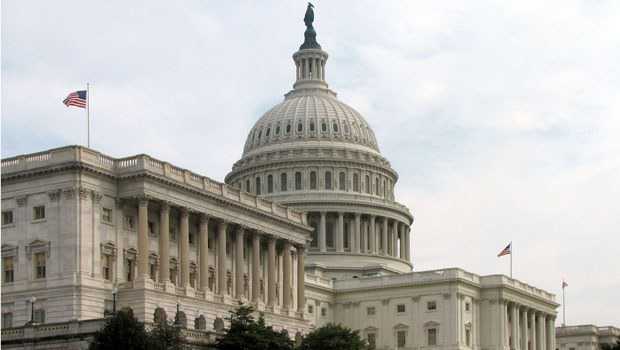Washington Post
By Michael Dobbs (dobbsm@washpost.com)
Michael Dobbs covered the collapse of the Soviet
Union for the Washington Post. His latest book is
“One Minute to Midnight: Kennedy, Khrushchev, and
Castro on the Brink of Nuclear War.”
It did not take long for the “Putin is Hitler”
analogies to start, following the eruption of the
ugly little war between Russia and Georgia over
the breakaway Georgian province of South Ossetia.
A neo-conservative commentator, Robert Kagan,
compared the Russian attack on Georgia with the
Nazi grab of the Sudetenland in 1938. President
Jimmy Carter’s former national security adviser
Zbigniew Brzezinski said that the Russian leader
was following a course “that is horrifyingly
similar to that taken by Stalin and Hitler in the 1930s.”
Others invoked the infamous Brezhnev doctrine of
limited sovereignty, under which Soviet leaders
claimed the right to intervene militarily in
Eastern Europe, in order to prop up their
crumbling imperium. “We’ve seen this movie before
in Prague and Budapest,” said presumptive
Republican nominee John McCain, referring to the
Soviet invasions of Czecholovakia in 1968 and Hungary in 1956.
Actually, the events of the past week in Georgia
have little in common either with Hitler’s
dismemberment of Czechoslovakia on the eve of
World War II or Soviet policies in Eastern
Europe. They are better understood against the
background of the complicated ethnic politics of
the Caucasus, a part of the world where
historical grudges run deep, and the oppressed
can become oppressors in the bat of an eye.
Unlike most of the armchair generals now posing
as experts on the Caucasus, I have actually
visited Tskhinvali, a sleepy provincial town in
the shadow of the mountains that rise up along
Russia’s southern border. I was there in March
1991, shortly after the city was occupied by
Georgian militia units loyal to Zviad
Gamsakhurdia, the first freely elected leader of
Georgia in seven decades. One of Gamsakhurdia’s
first acts as Georgian president was to cancel
the political autonomy that had been granted to
the republic’s 90,000-strong Ossetian minority
under the Stalinist constitution.
After negotiating safe passage with Soviet
interior ministry troops who had stationed
themselves between the Georgians and the
Ossetians, I discovered the town had been
ransacked by Gamsakhurdia’s militia. The
Georgians had trashed the Ossetian national
theater, decapitated the statue of an Ossetian
poet, and pulled down monuments to Ossetians who
fought with Soviet troops in World War II. The
Ossetians were responding in kind, firing on
Georgian villages and forcing Georgian residents
of Tskhinvali to flee their homes.
It soon became clear to me that the Ossetians
viewed Georgians much the same way Georgians view
Russians: as aggressive bullies bent on taking
away their independence. “We are much more
worried by Georgian imperialism than Russian
imperialism,” an Ossetian leader, Gerasim
Khugaev, told me. “It is closer to us, and we feel its pressure all the time.”
When it comes to apportioning blame for the
latest flareup in the Caucasus, there is plenty
to go around. The Russians were clearly itching
for a fight, but the behavior of Georgian
president Mikheil Saakashvili has been erratic
and provocative. The United States may have
stoked the conflict by encouraging Saakashvili to
believe he enjoyed American protection, when the
West’s ability to impose its will in this part of
the world is actually quite limited.
Let us examine the role played by the three main parties one by one.
Georgia. Saakashvili’s image in the West, and
particularly in America, is that of the great
“democrat,” the leader of the “Rose revolution”
who spearheaded a popular uprising against former
American favorite Eduard Shevardnadze in November
2003. It is true that he has won two, reasonably
free, elections, but he has also displayed some
autocratic tendencies; he sent riot police to
crush an opposition protest in Tbilisi last
November and shuttered an opposition television station.
While the U.S. views Saakashvili as a pro-Western
modernizer, a large part of his political appeal
in Georgia has stemmed from his promise to
re-unify Georgia by bringing the secessionist
provinces of South Ossetia and Abkhazia under
central control. He has presented himself as the
successor to the medieval Georgian king, David
the Builder, and promised that the country will
regain its lost territories by the time he leaves
office, by one means or another. American
commentators tend to overlook the fact that
Georgian democracy is inextricably intertwined with Georgian nationalism.
The restoration of Georgia’s traditional borders
is an understandable goal for a Georgian leader,
but is a much lower priority for the West,
particularly if it involves armed conflict with
Russia. Based on their previous experience with
Georgian rule, Ossetians and Abhazians have
perfectly valid reasons to be opposed to
reunification with Georgia, even if it means
throwing in their lot with the Russians.
It is unclear how the simmering tensions between
Georgia and South Ossetia came to the boil last
week. The Georgians say they were provoked by the
shelling of Georgian villages from
Ossetian-controlled territory. While this may be
well be the case, the Georgian response was
disproportionate. On the night of Aug. 7-8,
Saakashvili ordered an artillery barrage against
Tskhinvali, and sent an armored column to occupy
the town. He apparently hoped that Western
support would protect Georgia from major Russian
retaliation, even though Russian “peacekeepers”
were almost certainly killed or wounded in the Georgian assault.
It was a huge miscalculation. Russian Prime
Minister Vladimir Putin (and let there be no
doubt that he is calling the shots in Moscow
despite handing over the presidency to his
protege, Dmitri Medvedev) now had the ideal
pretext for settling scores with the uppity
Georgians. Rather than simply restoring the
status quo ante, Russian troops moved into
Georgia proper, cutting the main east-west
highway at Gori and attacking various military bases.
Saakashvili’s decision to gamble everything on a
lightning grab for Tskhinvali brings to mind the
comment of the 19th century French statesman
Maurice de Talleyrand: “it was worse than a crime, it was a mistake.”
Russia. Putin and Medvedev have defended their
incursion into Georgia as motivated by a desire
to stop the “genocide” of Ossetians by Georgians.
It is difficult to take their moral outrage very
seriously. There is a striking contrast between
Russian support for the right of Ossetian
self-determination in Georgia and the brutal
suppression of Chechens who were trying to
exercise that very same right within the boundaries of Russia.
Playing one ethnic group off against another in
the Caucasus has been standard Russian policy
ever since tzarist times. It is the ideal wedge
issue for the Kremlin, particularly in the case
of a state like Georgia, which is made up of
several different nationalities. It would be
virtually impossible for South Ossetia to survive
as an autonomous entity without Russian support.
Over the last few months, Putin’s government has
issued passports to Ossetians and secured the
appointment of Russians to key positions in Tskhinvali.
The Russian incursion into Georgia proper has
been even more “disproportionate” — in
President’s Bush phrase — than the Georgian
assault on Tskhinvali. The Russians have made no
secret of their wish to replace Saakashvili with
a more compliant leader. Targets for Russian
shelling included the Black Sea port of Poti —
more than 100 miles from South Ossetia.
The real goal of Kremlin strategy is to reassert
Russian influence in a part of the world that has
been regarded, by tzars and commissars alike, as
Russia’s backyard. Russian leaders bitterly
resented the eastward expansion of NATO to
include Poland and the Baltic states — with
Ukraine and Georgia next on the list — but were
unable to do very much about it as long as
America was strong and Russia was weak. Now the
tables are turning for the first time since the
collapse of Communism in 1991, and Putin is seizing the moment.
If Putin is smart, he will refrain from occupying
Georgia proper, a step that would further alarm
the West and unite Georgians against Russia. A
better tactic would be to wait for Georgians
themselves to turn against Saakashvili. The
precedent here is what happened to Gamsakhurdia,
who was overthrown by the same militia forces he
had sent into to South Ossetia a year later, in January 1992.
The United States. The Bush administration has
been sending mixed messages to its Georgian
clients. U.S. officials insist that they did not
give the green light to Saakashvili for his
attack on South Ossetia. At the same time,
however, the U.S. has championed NATO membership
for Georgia, sent military advisers to bolster
the Georgian army, and demanded the restoration
of Georgian territorial integrity. American
support might well have emboldened Saakashvili as
he was considering how to respond to the “provocations” from South Ossetia.
Now the United States has ended up in a situation
in the Caucasus where the Georgian tail is
wagging the NATO dog. We were unable to control
Saakashvili or to lend him effective assistance
when his country was invaded. One lesson is that
we need to be very careful in extending NATO
membership, or even the promise of membership, to
countries we have neither the will nor the ability to defend.
In the meantime, American leaders have paid
little attention to Russian diplomatic concerns,
both inside the former borders of the Soviet
Union and farther abroad. The Bush administration
unilaterally abrogated the 1972 anti-missile
defense treaty and ignored Putin when he objected
to Kosovo independence on the grounds that it
would set a dangerous precedent. It is difficult
to explain why Kosovo should have the right to
unilaterally declare its independence from
Serbia, while the same right should be denied to
places like South Ossetia and Abkhazia.
The bottom line is that the United States is
overextended militarily, diplomatically, and
economically. Even hawks like Vice President
Cheney, who have been vociferously denouncing
Putin’s actions in Georgia, have no stomach for a
military conflict with Moscow. The United States
is bogged down in Iraq and Afghanistan, and needs
Russian support in the coming trial of strength
with Iran over its nuclear ambitions.
Instead of speaking softly and wielding a big
stick, as Teddy Roosevelt recommended, the
American policeman has been loudly lecturing the
rest of the world while waving an increasingly
unimpressive baton. The events of the past few
days serve as a reminder that our ideological
ambitions have greatly exceeded our military
reach, particularly in areas like the Caucasus,
which is of only peripheral importance to the
United States but is of vital interest to Russia.






